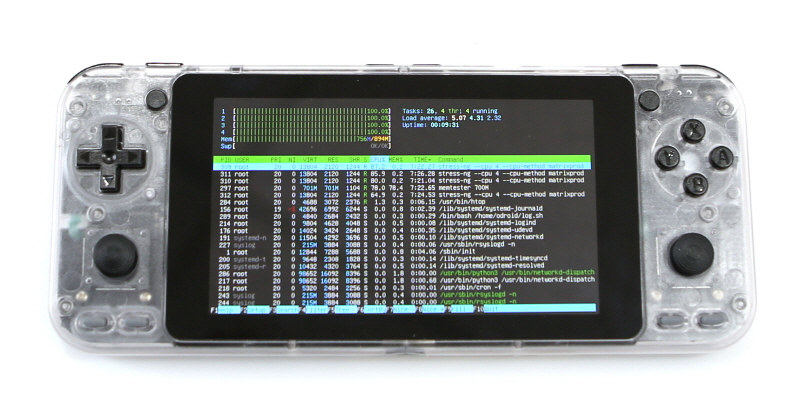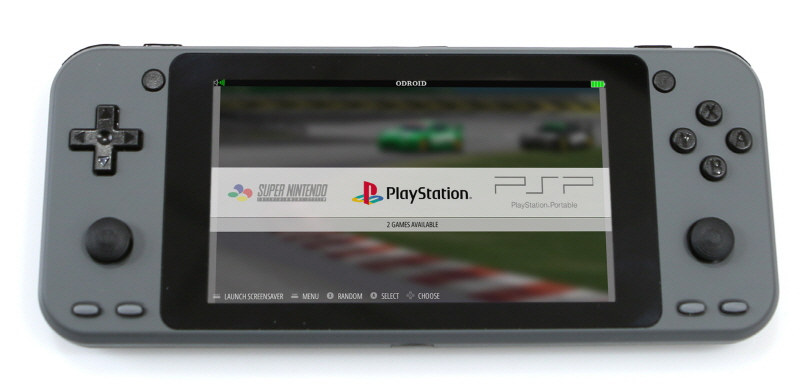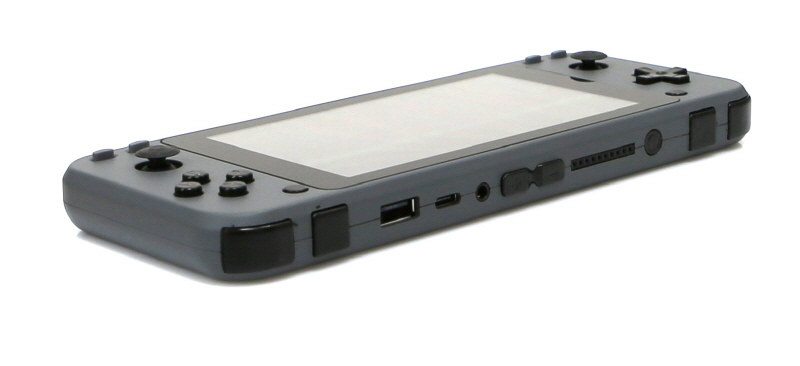Hardkernel introduced ODROID-Go ESP32-based portable gaming console in 2018. The following year, the Korean company went up the scale with ODROID-Go Advance (aka OGA) running Linux on Rockchip RK3326 quad-core Cortex-A35 processor.
We’ve now got a new 2020 announcement with ODROID-Go Super (OGS) with most of the same specifications as OGA, but a larger 5-inch 854×480 display replacing the 3.5-inch 480×320 display, a higher capacity battery, and the addition of a second analog joystick and dedicated volume buttons.
ODROID-Go Super (preliminary) specifications:
- SoC – Rockchip RK3326 quad-core Arm Cortex-A35 processor @ 1.3GHz with Mali-G31 MP2 GPU
- System Memory – 1GB DDR3L @ 786Mhz, 32 Bits bus width
- Storage – 16MB SPI Flash for bootloader, push-push Micro SD Card slot (UHS-1 Capable interface)
- Display – 5-inch 854×480 TFT LCD (MIPI-DSI interface)
- Audio – 3.5mm earphone stereo jack, 0.5Watt 8Ω Mono speaker
- USB – 1x USB 2.0 host port
- Buttons – F1, F2, F3, F4, F5, F6, A, B, X, Y, Direction Pad, Left Shoulder, Right Shoulder, 2x Analog joysticks, volume buttons
- Expansion – 10-pin header with I2C, GPIO, IRQ at 3.3Volt
- Battery
- 3.7V/4,000mAh Li-Polymer battery
- 10+ hours of continuous game playing time
- Power Supply – 5V/1.5A max via 2.5mm DC Jack
- Dimensions & Weight – TBD
ODROID-Go Super still runs Ubuntu 20.04 with EmulationStation to play retro games via emulators supporting various game consoles from Sony, Nintendo, Atari, Sega, and NEC. Despite the higher resolution, the company says emulation performance is very similar to the original OGA. You can find the latest v2.0 image in the Wiki.
The OGS is now pre-assembled in Hardkernel’s factory instead of being a DIY kit, and comes with either a dim gray or clear white enclosure.

The company will send some early samples to the developers’ community next week, and ODROID-Go Super will start selling for $80 at the end of January 2021. You’ll find additional photos and details in the announcement on ODROID forums.
Thanks to Tim for the tip.

Jean-Luc started CNX Software in 2010 as a part-time endeavor, before quitting his job as a software engineering manager, and starting to write daily news, and reviews full time later in 2011.
Support CNX Software! Donate via cryptocurrencies, become a Patron on Patreon, or purchase goods on Amazon or Aliexpress






